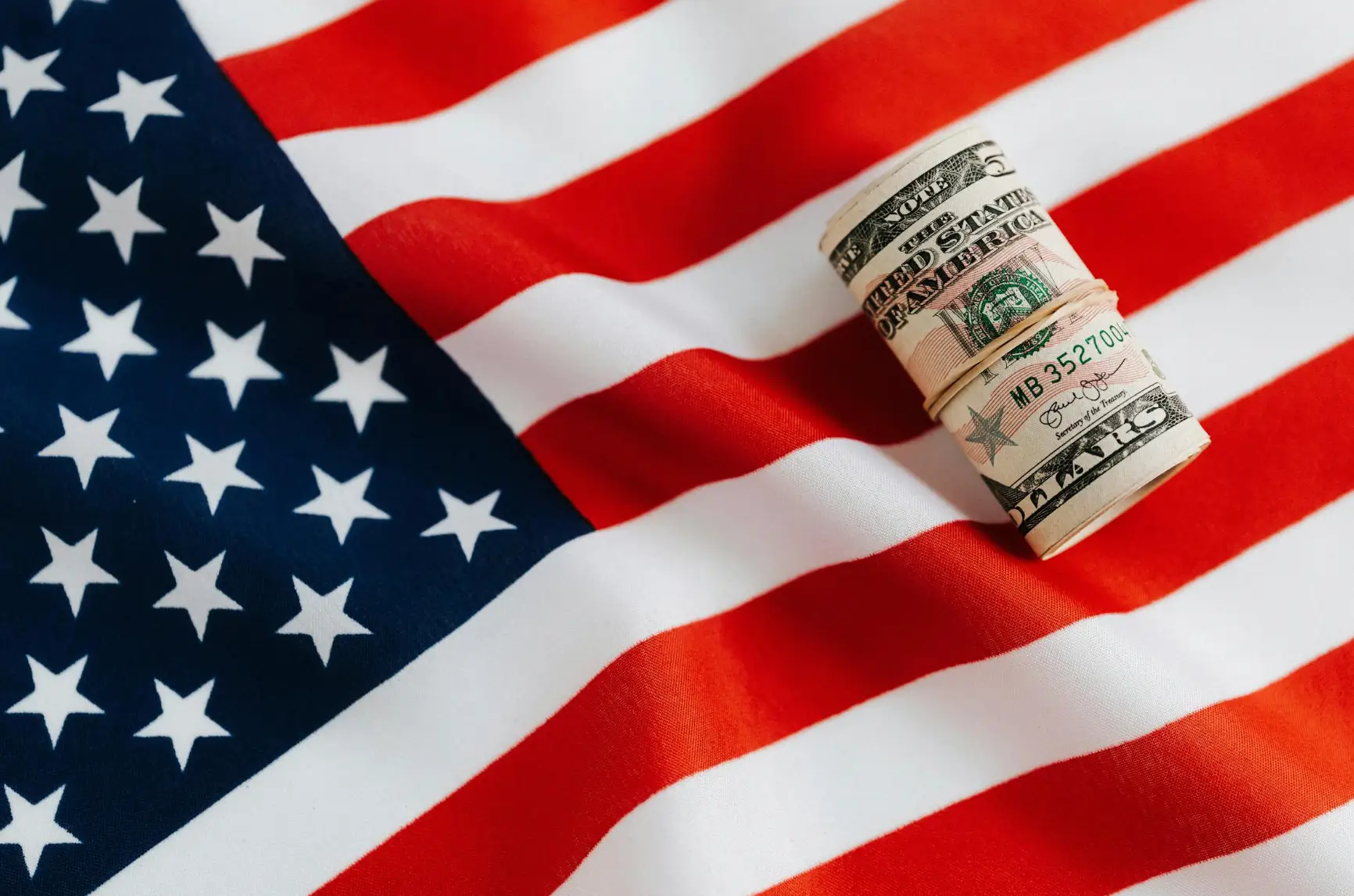U.S Economy: Surprise GDP Drop Sparks Recession Fears as Inflation Stays Hot
30.04.2025 16:49 1 min. read Alexander Stefanov
The U.S. economy stumbled at the start of 2025, logging a 0.3% annualized decline in GDP—marking a sharp contrast to late 2024’s growth.
This early estimate from the Commerce Department suggests momentum is fading, despite resilient consumer demand.
Beneath the surface, private sector activity remained solid, with real final sales rising 3%. But price pressures were also rising: consumer-related inflation gauges hovered around 3.5%, underscoring the persistent cost-of-living squeeze.
The contraction came largely from two fronts: a pullback in government outlays and a spike in imports, which drag on the GDP calculation. Although business investment and exports provided some lift, they weren’t enough to offset the drag.
Worries over tariffs appear to have driven an early surge in imports, distorting the quarter’s figures. At the same time, public sector consumption fell sharply, adding to the weakness. Analysts caution that these trends could worsen in the second quarter, edging the economy closer to a recession.
Forecasts had pointed to slight growth, with expectations centered around 0.3% to 0.5%. Now, the narrative is shifting. Trading Economics revised its Q2 outlook to -1.2%, and Polymarket traders raised recession odds to 71%.
Markets didn’t take the news lightly. Bitcoin slipped, gold inched higher, and U.S. equities dipped alongside rising bond yields. Meanwhile, leading GDP models painted conflicting pictures—ranging from a deep contraction to moderate growth—further clouding the economic outlook.
-
1
Gold Beats U.S. Stock Market Over 25 Years, Even With Dividends Included
13.07.2025 15:00 1 min. read -
2
US Inflation Heats Up in June, Fueling Uncertainty Around Fed Cuts
15.07.2025 16:15 2 min. read -
3
U.S. Announces Sweeping New Tariffs on 30+ Countries
12.07.2025 16:30 2 min. read -
4
Robert Kiyosaki Predicts When The Price of Silver Will Explode
28.06.2025 16:30 2 min. read -
5
Trump Targets Powell as Fed Holds Rates: Who Could Replace Him?
27.06.2025 9:00 2 min. read
US Inflation Heats Up in June, Fueling Uncertainty Around Fed Cuts
U.S. inflation accelerated in June, dealing a potential setback to expectations of imminent Federal Reserve rate cuts.
Gold Beats U.S. Stock Market Over 25 Years, Even With Dividends Included
In a surprising long-term performance shift, gold has officially outpaced the U.S. stock market over the past 25 years—dividends included.
U.S. Announces Sweeping New Tariffs on 30+ Countries
The United States has rolled out a broad set of new import tariffs this week, targeting over 30 countries and economic blocs in a sharp escalation of its trade protection measures, according to list from WatcherGuru.
Key U.S. Economic Events to Watch Next Week
After a week of record-setting gains in U.S. markets, investors are shifting focus to a quieter yet crucial stretch of macroeconomic developments.
-
1
Gold Beats U.S. Stock Market Over 25 Years, Even With Dividends Included
13.07.2025 15:00 1 min. read -
2
US Inflation Heats Up in June, Fueling Uncertainty Around Fed Cuts
15.07.2025 16:15 2 min. read -
3
U.S. Announces Sweeping New Tariffs on 30+ Countries
12.07.2025 16:30 2 min. read -
4
Robert Kiyosaki Predicts When The Price of Silver Will Explode
28.06.2025 16:30 2 min. read -
5
Trump Targets Powell as Fed Holds Rates: Who Could Replace Him?
27.06.2025 9:00 2 min. read


